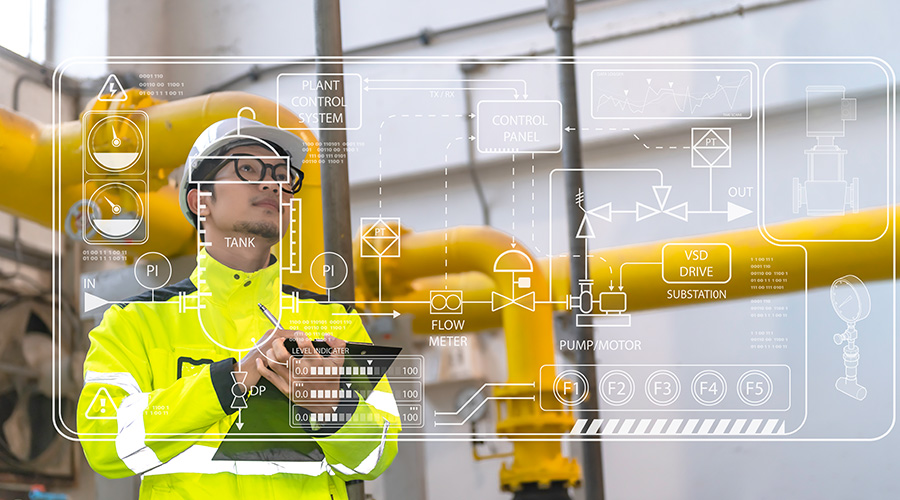Facility Management Automation: Enhancing Efficiency and Productivity

Facility management automation is redefining the way businesses oversee their physical spaces in today’s fast-paced world. Leveraging the power of the Internet of Things (IoT), this strategic application of technology is streamlining asset management, encompassing security, energy optimisation, and proactive maintenance.
This article delves into the transformative potential of automation in facility management, focusing on its benefits and addressing some implementation challenges. We’ll explore how automation in asset management is enhancing production and efficiency across various sectors.
Understanding Asset Management Automation
What is asset management automation?
Asset management automation involves the systematic utilisation of technology to administer and optimise buildings and assets. Its scope encompasses various responsibilities, such as maintenance, energy management, and access control. To emphasize real-time data collection and facilitate data-driven decision-making for quick issue resolution, asset management automation relies heavily on the Internet of Things (IoT).
Benefits of Asset Management Automation
Enhanced Efficiency
Automation is primarily about efficiency enhancement. It eliminates time-consuming manual tasks, simplifies processes, and enables continuous real-time monitoring. Consequently, this leads to significant cost reductions, particularly in areas like energy consumption and maintenance expenses.
Improved Productivity
Beyond efficiency gains, automation contributes to overall productivity improvement. By automating routine tasks, it frees up valuable time and resources for strategic endeavours. Furthermore, access to comprehensive data facilitates data-driven decision-making, further enhancing productivity.
Automation Technologies in Asset Management
Smart Sensors and IoT
At the core of automation in asset management are smart sensors and Internet of Things (IoT) devices that seamlessly interface with Building Management Systems (BMS) and other building infrastructure. These tools are indispensable for optimising facility operations, ensuring efficiency, and reducing costs.
Predictive Maintenance
Predictive maintenance is another critical component of automated asset management. It substantially reduces downtime and maintenance expenses by predicting equipment failures and necessary repairs through advanced data analytics.
Security and Access Control
Security and access control are seamlessly integrated into asset management, enhancing safety through automated monitoring and access management systems.
Implementation Challenges and Solutions
Initial Costs and ROI
While the benefits of automation are substantial, organisations must address the initial investment required. However, conducting a comprehensive return on investment analysis can justify these costs by highlighting the long-term advantages.
Integration Complexity
Integrating automation solutions, particularly in environments with existing infrastructure, can be challenging. Collaborating with experienced providers and conducting compatibility tests can simplify the integration process.
Data Security and Privacy
Data security and privacy are of paramount importance due to the vast amount of data generated by automation. Essential precautions include adhering to regulations, employing robust data encryption, and implementing preventive measures.
Future Trends in Asset Management Automation
The future promises exciting developments in asset management automation.
Artificial Intelligence and Machine Learning
Facilities will harness the power of predictive analytics and self-learning systems to generate increasingly precise forecasts and automatically enhance operations.
Robotics and Autonomous Systems
Robotic cleaning and maintenance, along with autonomous logistics solutions, will revolutionise daily facility management tasks.
Sustainability Practices
Facilities will increasingly adopt sustainable practices, including renewable energy integration and the use of eco-friendly building materials, to reduce their environmental footprint.
In conclusion, asset management is undergoing a transformative revolution powered by automation, resulting in efficiency gains, cost savings, and sustainability benefits. This shift places automation-centric businesses at the forefront of productivity and environmental responsibility, making it an essential strategy for modern organisations.
Leading the charge in facility management innovation, UPS Facility Management (UPSFM) is committed to optimising physical spaces. Our core focus is on proactive maintenance solutions that enhance facility performance and protect investments with cost-effective preventive measures. Our expertise includes regular inspections, comprehensive preventive maintenance planning, and continuous improvement efforts, yielding safety enhancements, equipment reliability, cost reductions, heightened tenant satisfaction, and extended asset lifespans.
Embrace automation as the future of asset management with UPSFM, and explore our proactive maintenance solutions to elevate your property management experience in the dynamic realm of intelligent buildings. Visit us at UPSFM to learn more about our asset management solutions.
Have any feedback or questions?
Contact us!




